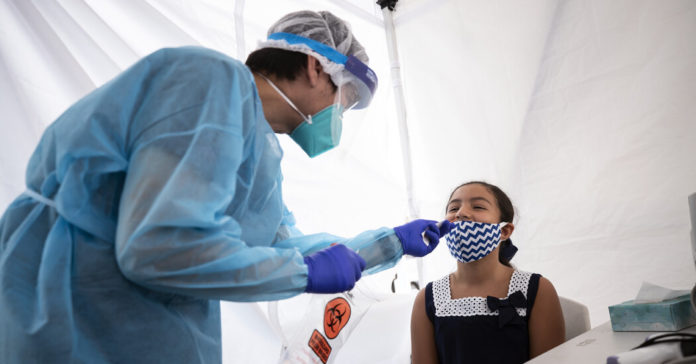In medicine, children are often “assumed to be just miniature versions of grown-ups,” said Jennifer Dien Bard, director of the clinical microbiology and virology laboratory at Children’s Hospital Los Angeles. “But they are not just small adults. It’s really important that any testing that is available, that there are specific strategies offered for children and their specific needs.”
In the rush to clear treatments, vaccines and diagnostics for widespread use, companies often neglect to include children in early trials that test whether products or therapies are safe and effective. But tests for viruses, bacteria and other infectious microbes that yield stellar results for adults do not always translate perfectly for children.
The reasons behind these differences are not always obvious, Dr. Pollock said. For instance, children’s immune systems might be better at homing in on and sequestering certain infectious invaders, making them harder to detect with standard-issue tests.
In one study, published in the Journal of Clinical Microbiology in October, Dr. Pollock and her team amassed data from nine pediatric hospitals across the country, all of which reported relatively scant counts of the virus in children without symptoms. Another, which has not yet been published in a peer-reviewed scientific journal, hinted at a similar trend in children who were sick.
The Coronavirus Outbreak ›
Words to Know About Testing
Confused by the terms about coronavirus testing? Let us help:
-
- Antibody: A protein produced by the immune system that can recognize and attach precisely to specific kinds of viruses, bacteria, or other invaders.
- Antibody test/serology test: A test that detects antibodies specific to the coronavirus. Antibodies begin to appear in the blood about a week after the coronavirus has infected the body. Because antibodies take so long to develop, an antibody test can’t reliably diagnose an ongoing infection. But it can identify people who have been exposed to the coronavirus in the past.
- Antigen test: This test detects bits of coronavirus proteins called antigens. Antigen tests are fast, taking as little as five minutes, but are less accurate than tests that detect genetic material from the virus.
- Coronavirus: Any virus that belongs to the Orthocoronavirinae family of viruses. The coronavirus that causes Covid-19 is known as SARS-CoV-2.
- Covid-19: The disease caused by the new coronavirus. The name is short for coronavirus disease 2019.
- Isolation and quarantine: Isolation is the separation of people who know they are sick with a contagious disease from those who are not sick. Quarantine refers to restricting the movement of people who have been exposed to a virus.
- Nasopharyngeal swab: A long, flexible stick, tipped with a soft swab, that is inserted deep into the nose to get samples from the space where the nasal cavity meets the throat. Samples for coronavirus tests can also be collected with swabs that do not go as deep into the nose — sometimes called nasal swabs — or oral or throat swabs.
- Polymerase Chain Reaction (PCR): Scientists use PCR to make millions of copies of genetic material in a sample. Tests that use PCR enable researchers to detect the coronavirus even when it is scarce.
- Viral load: The amount of virus in a person’s body. In people infected by the coronavirus, the viral load may peak before they start to show symptoms, if symptoms appear at all.
Laboratory tests, such as those that use a technique called polymerase chain reaction, or P.C.R., are sensitive enough to uncover these low-level infections, Dr. Pollock said. But the virus may not be present in high enough amounts to be discovered by a rapid test, such as those that detect only relatively large quantities of antigens, or bits of coronavirus proteins. The Binax NOW is one such test.
Many such children “are going to be negative on rapid tests,” Dr. Pollock said. “That impacts how we think about school settings and day care.”
It may be that some children are naturally predisposed to harbor less of the virus. It was also possible that the children in these studies were all sampled too late in their infections, when the virus had already petered out. If that was the case, Dr. Pollock said, these children might have once carried or even transmitted the virus in large amounts, but they were not tested during that time. Teasing apart these scenarios apart be difficult without testing many more children, she said.
Source : Nytimes












